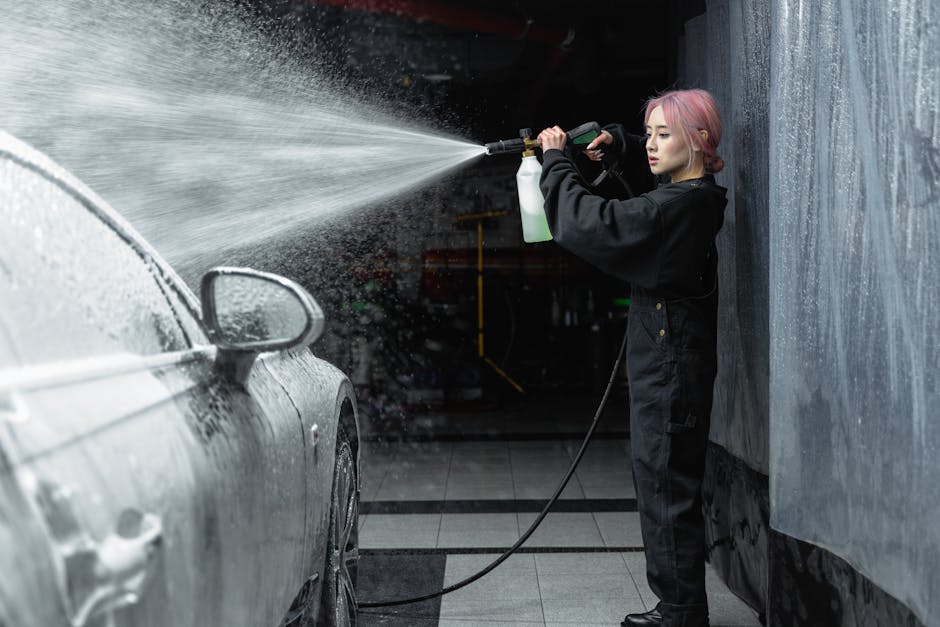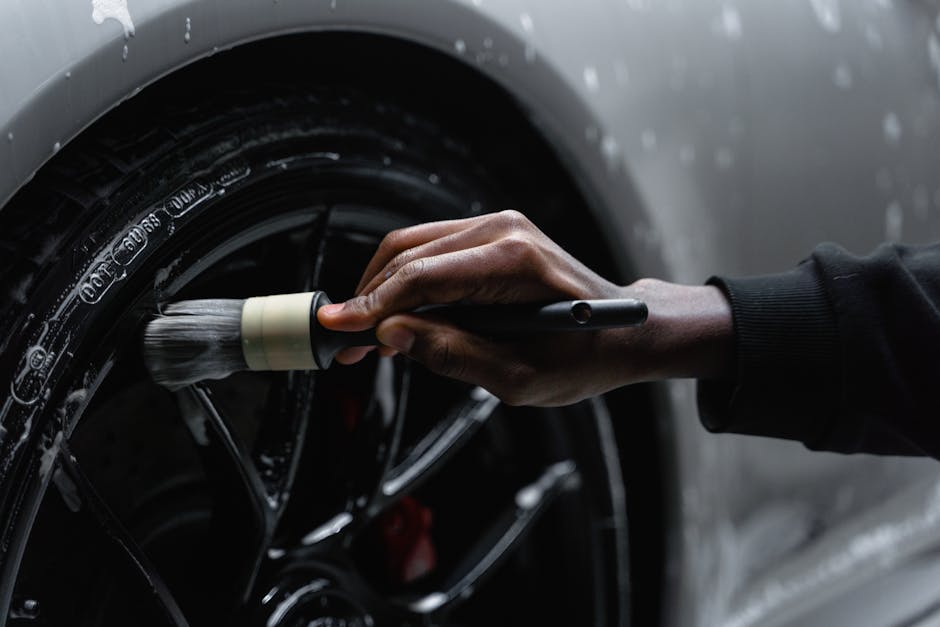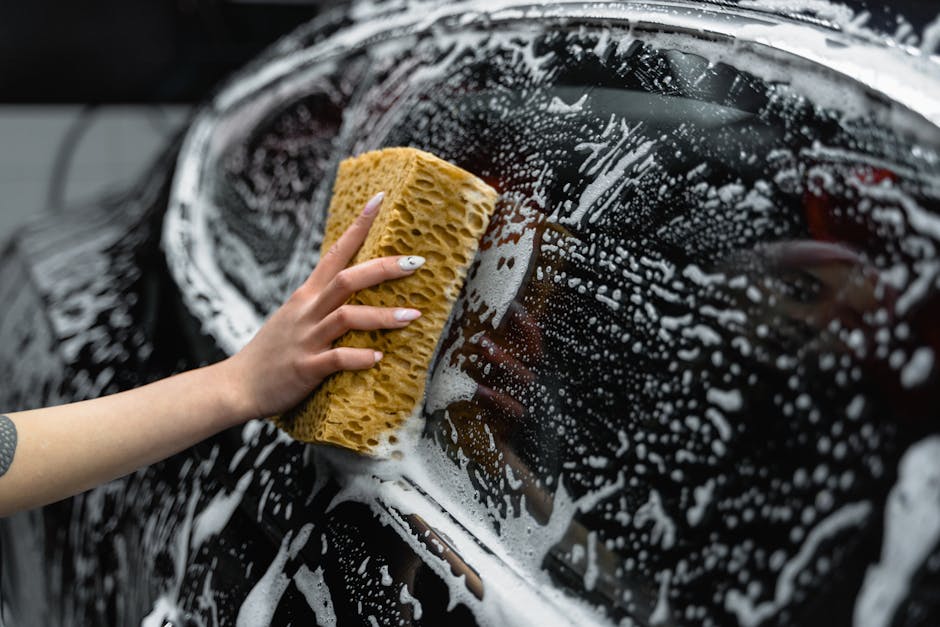Car Detailing Tips for Beginners
Have you ever marveled at a shiny, impeccably clean car and wondered how you could achieve the same level of perfection? Car detailing is an art form that goes beyond a simple car wash. It involves cleaning, restoration, and finishing of a vehicle to produce a show-quality cleanliness and polish. For beginners, delving into the world of car detailing may seem daunting, but with the right tips and techniques, you can elevate your car’s appearance to a professional level. In this comprehensive guide, we will explore the essential car detailing tips for beginners, equipping you with the knowledge and skills to transform your vehicle into a pristine work of art.
The Basics of Car Detailing

Before diving into the specifics of car detailing, it’s crucial to understand the fundamental principles that underpin this practice. Car detailing involves a meticulous cleaning and restoration process that aims to enhance the overall appearance of a vehicle, both inside and out. It goes beyond a standard car wash by focusing on intricate details and using specialized tools and products to achieve a flawless finish.
When embarking on your car detailing journey, it’s essential to gather the necessary supplies, including microfiber towels, wash mitts, detailing brushes, wax, polish, and interior cleaners. Investing in high-quality products and tools will ensure better results and protect your vehicle’s surfaces from damage.
Now, let’s delve into the essential car detailing tips for beginners to help you achieve professional results:
1. Start with the Interior

The interior of your car is where you spend most of your time, so it’s vital to keep it clean and organized. Begin by removing all clutter, trash, and personal items from the car. Use a vacuum cleaner with various attachments to thoroughly clean the carpets, seats, and upholstery. Pay special attention to crevices and hard-to-reach areas where dirt and debris tend to accumulate.
Next, clean the interior surfaces using appropriate cleaners for each material. For leather seats, use a leather cleaner and conditioner to restore their luster and prevent cracking. For plastic and vinyl surfaces, choose a mild all-purpose cleaner to remove dirt and grime without causing damage.
Finally, don’t forget to clean the windows and mirrors using a glass cleaner and microfiber cloth to achieve a streak-free shine. Taking care of the interior will not only improve the aesthetics of your car but also enhance your driving experience.
2. Exterior Cleaning and Washing

The exterior of your car is constantly exposed to the elements, which can take a toll on its appearance. To maintain a clean and shiny exterior, start by washing the car with a high-quality car wash soap and a microfiber wash mitt. Avoid using household detergents, as they can strip off the wax and damage the paint.
After washing, dry the car using a clean microfiber towel to prevent water spots. If you notice any stubborn stains or contaminants on the paint, consider using a clay bar to remove them effectively. This will prepare the surface for polishing and waxing, ensuring a smooth and glossy finish.
When it comes to washing your car, remember to work in sections and rinse the mitt regularly to prevent scratches. Using two buckets one for soap and one for rinsing can also help minimize the risk of swirl marks and scratches.
3. Polishing and Waxing

Once the car is clean and dry, it’s time to polish and wax the paint to enhance its shine and protection. Polishing helps remove minor imperfections, swirl marks, and scratches, while waxing provides a protective layer that seals the paint and adds depth to the finish.
Choose a high-quality polish and apply it using a dual-action polisher or by hand in a circular motion. Work in small sections to ensure even coverage and allow the polish to dry before buffing it off with a clean microfiber towel. After polishing, apply a coat of wax to protect the paint and give it a glossy appearance.
Regular polishing and waxing not only improve the aesthetics of your car but also protect it from UV rays, environmental contaminants, and oxidation. Maintaining a consistent detailing routine will prolong the life of your vehicle’s paint and keep it looking like new.
4. Wheel and Tire Care
The wheels and tires are often overlooked during the detailing process, but they play a significant role in the overall appearance of your car. Start by cleaning the wheels with a wheel cleaner and a brush to remove brake dust, dirt, and grime. Use a separate brush for the tires to scrub off any residue and restore their black finish.
After cleaning, consider applying a tire dressing to give the tires a deep, rich look and protect them from cracking and fading. For the wheels, you can use a wheel sealant or wax to add a layer of protection and make cleaning easier in the future.
Proper wheel and tire care not only enhance the aesthetics of your car but also contribute to its overall maintenance and longevity. Remember to clean and protect them regularly to prevent corrosion and damage caused by road debris and harsh weather conditions.
5. Detailing the Engine Bay
The engine bay is often neglected during car detailing, but keeping it clean and well-maintained can improve the performance and longevity of your vehicle. Start by covering sensitive components such as the alternator, air intake, and electrical connections with plastic bags or towels to prevent water damage.
Use a degreaser to remove dirt, grease, and grime from the engine bay, then rinse it thoroughly with a gentle stream of water. Avoid using a high-pressure washer, as it can force water into sensitive areas and cause damage. Once the engine bay is clean and dry, apply a dressing to plastic and rubber components to restore their shine and protect them from UV damage.
Detailing the engine bay not only improves the aesthetics of your car but also allows for better heat dissipation and prevents corrosion and rust. Regular maintenance of the engine bay will ensure optimal performance and longevity of your vehicle’s engine components.
6. Interior Detailing Tips
Interior detailing involves cleaning and restoring the inside of your car to a pristine condition. Start by vacuuming the carpets, seats, and upholstery to remove dirt, crumbs, and debris. Use a brush attachment to agitate the fibers and loosen stubborn dirt for easier extraction.
Next, clean the dashboard, door panels, and center console using an all-purpose cleaner and a microfiber towel. Pay attention to intricate details such as air vents, cup holders, and trim pieces to ensure a thorough clean. Use a detailing brush to reach tight spaces and remove dust and dirt effectively.
For leather and vinyl surfaces, use a specialized cleaner and conditioner to restore their appearance and protect them from drying out and cracking. Avoid using silicone-based products, as they can leave a greasy residue and attract dust and dirt.
7. Protecting Your Investment
After completing the detailing process, it’s essential to protect your investment and maintain the results for as long as possible. Consider applying a ceramic coating or paint sealant to provide long-lasting protection against UV rays, environmental contaminants, and minor scratches.
Regular maintenance, such as washing and waxing your car, will ensure the longevity of the protective coating and keep your vehicle looking pristine. Investing in quality products and tools, and following a consistent detailing routine, will help preserve the appearance and value of your car for years to come.
Expert Opinions
According to renowned car detailing experts, the key to achieving professional results lies in attention to detail and using the right products and techniques. Consistency is also crucial, as regular maintenance will ensure that your car stays in top condition and retains its value over time.
Paul Dalton, a world-renowned car detailer, emphasizes the importance of using high-quality products and tools to achieve professional results. He suggests investing in premium microfiber towels, wash mitts, and detailing brushes to protect your vehicle’s surfaces and prevent damage during the detailing process.
For interior detailing, renowned detailer Larry Kosilla recommends using a steam cleaner to remove stubborn stains and odors effectively. Steam cleaning not only sanitizes the interior surfaces but also eliminates bacteria and allergens, creating a healthier environment inside your car.
Conclusion
To wrap things up, car detailing is a rewarding practice that allows you to transform your vehicle into a show-worthy masterpiece. By following the essential tips and techniques outlined in this guide, beginners can elevate their car detailing skills and achieve professional results. From interior cleaning to exterior polishing and waxing, each step plays a crucial role in enhancing the appearance and longevity of your vehicle.
Remember, consistency is key when it comes to car detailing. By investing in quality products, using the right tools, and following a regular maintenance routine, you can protect your investment and enjoy a clean, shiny car for years to come. So, roll up your sleeves, grab your detailing supplies, and embark on your car detailing journey today!




